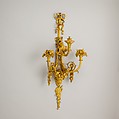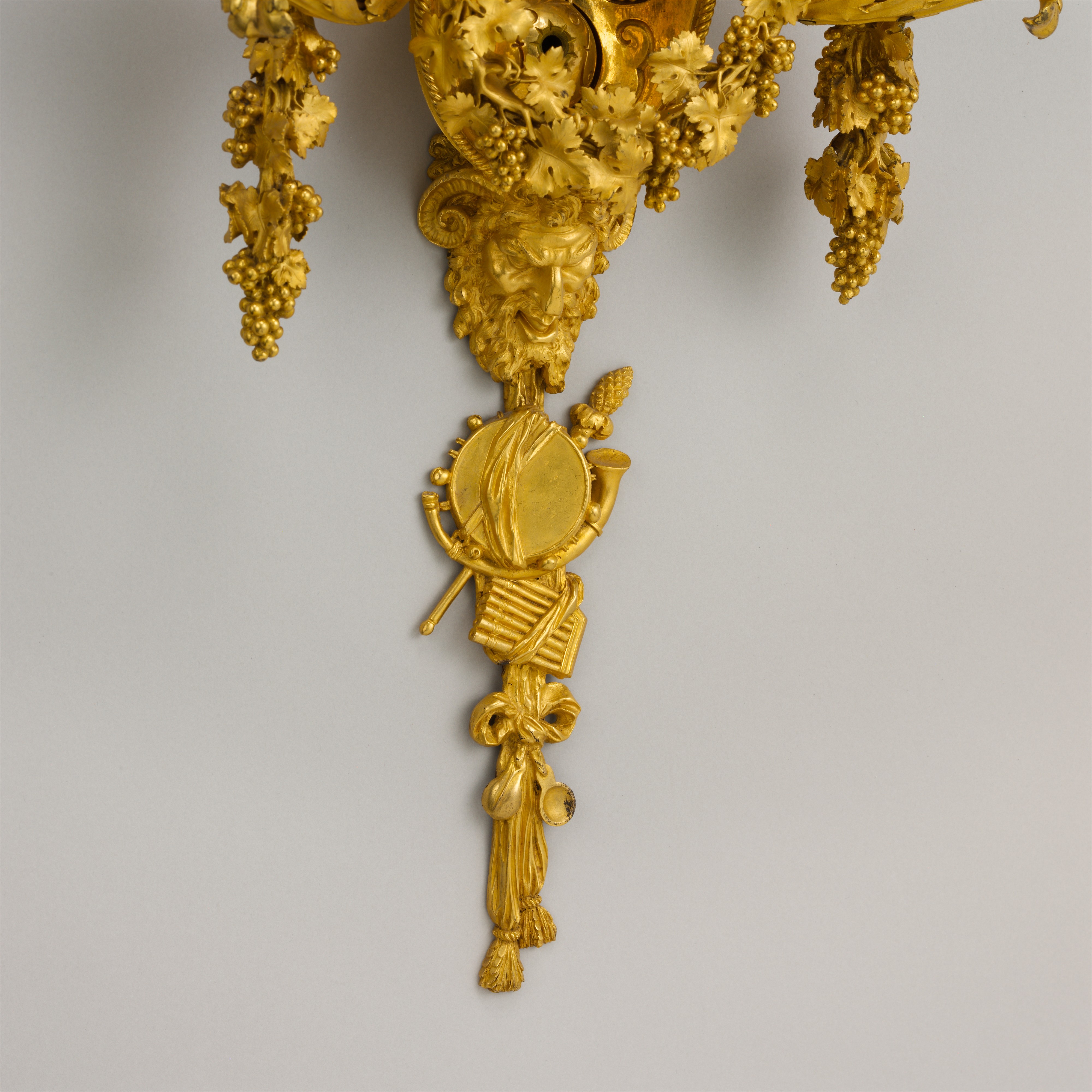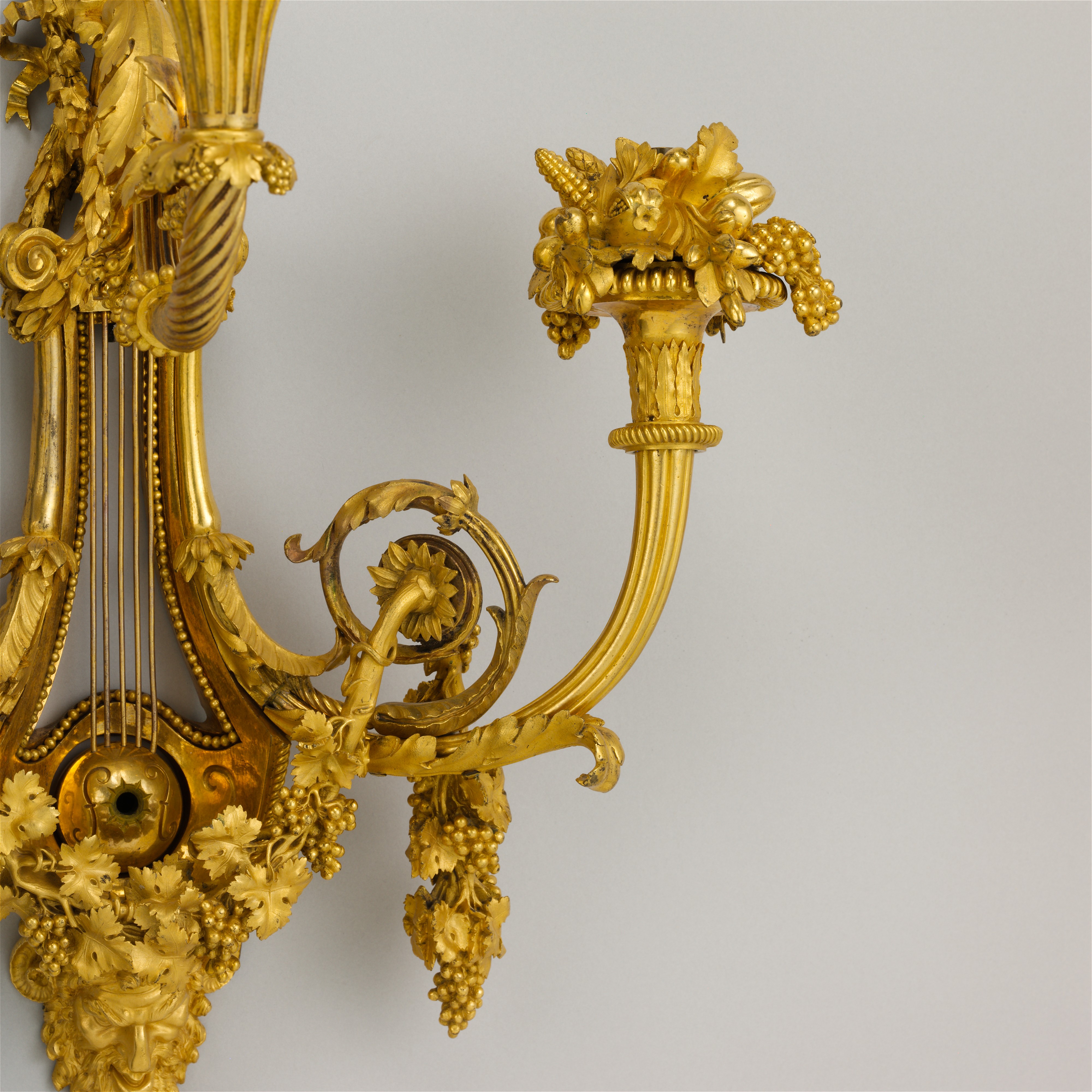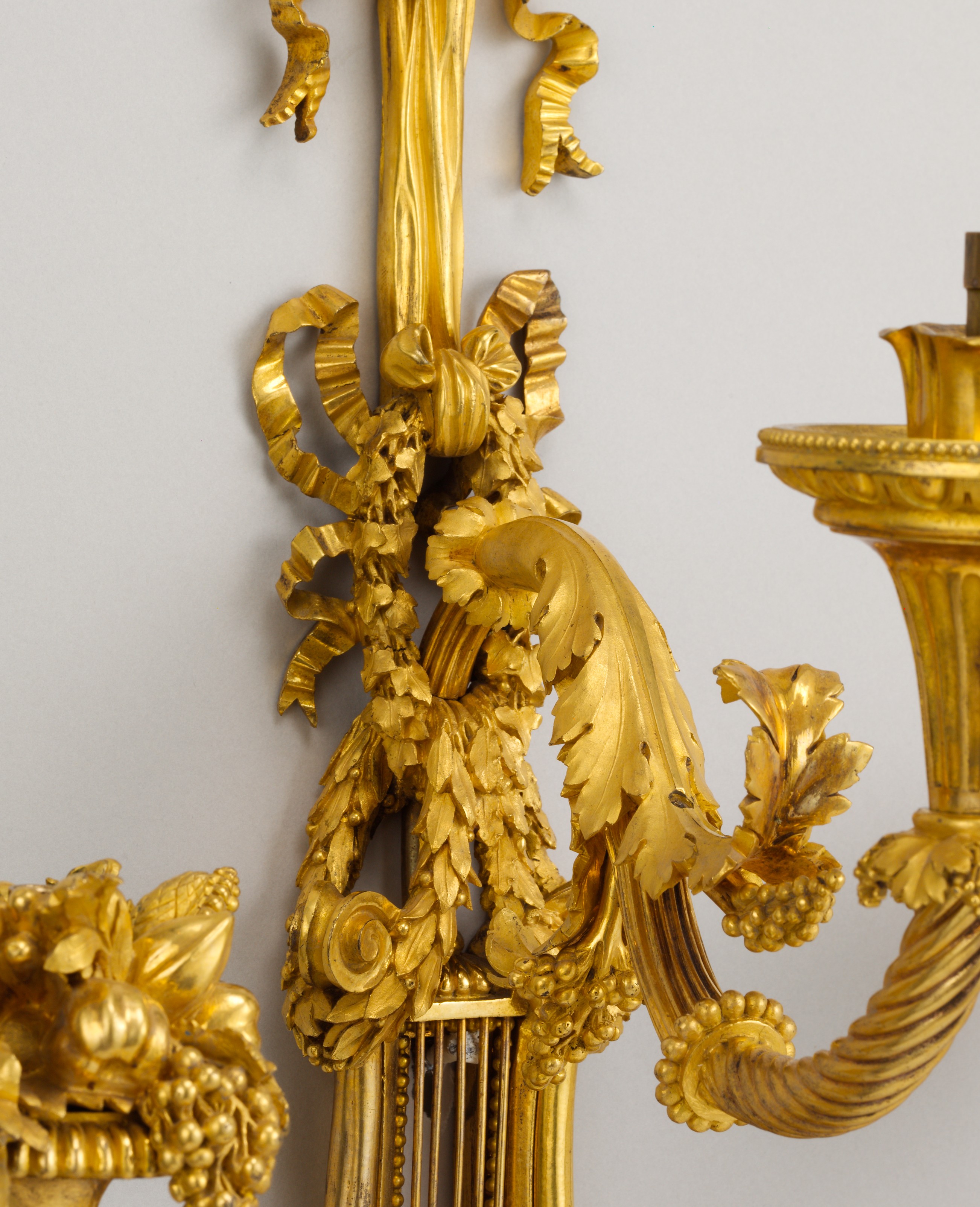Set of four three-light sconces (bras de lumière)
Music was one of Marie-Antoinette’s lifelong diversions. She was taught to perform and sing when young in Vienna, where the opera composer Christoph Willibald Gluck (1714–1787) was her tutor. She amused herself with music several hours a day at the French court and was a devotee of the opera. The queen’s enjoyment of music is reflected in the design of these wall lights, which were ordered probably in 1787 or the following year for her use at the Château de Saint-Cloud. Although no precise date or authorship have been established for them, they can easily be recognized among the furnishings listed as in the queen’s Cabinet Intérieur in the detailed inventory description of the summer castle drawn up in 1789.
Suspended from a gilt-bronze ribbon tied in a bowknot, the back plate of the sconces is shaped like a lyre with a pendant trophy of musical instruments. In addition to music, the decoration also alludes to Bacchus, the Roman deity of wine and drunken revelry who was also patron of viticulture, and who is frequently shown in the company of satyrs dancing to music. Two of the arms are shaped as cornucopias with scrolls and garlands of vine leaves and grapes, their candle dishes piled up with fruit. A satyr mask and thyrsus, the staff topped by a pinecone, an attribute of Bacchus, join the trophy of musical instruments.
Due to rights restrictions, this image cannot be enlarged, viewed at full screen, or downloaded.
This artwork is meant to be viewed from right to left. Scroll left to view more.





